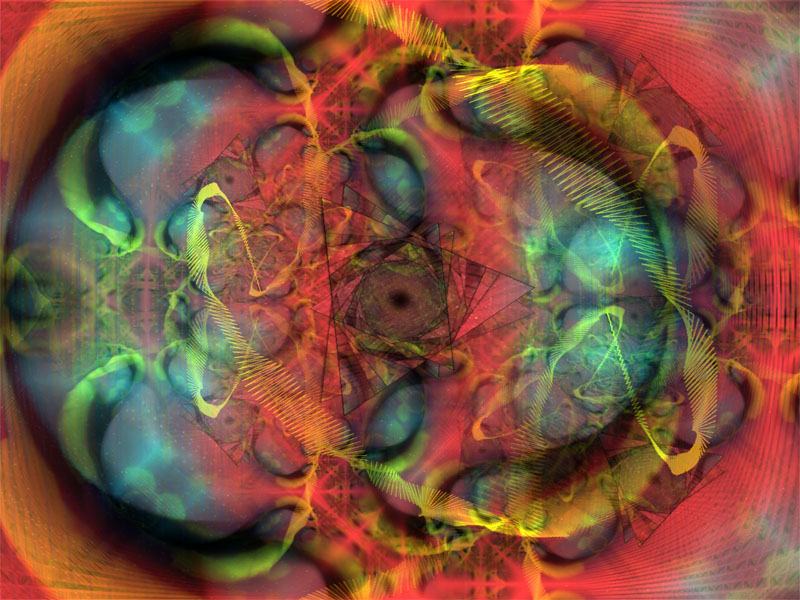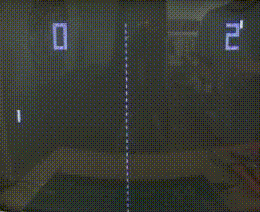|
Music Visualization
Music visualization or music visualisation, a feature found in electronic music visualizers and media player software, generates animated Computer-generated imagery, imagery based on a piece of music. The imagery is usually generated and rendered in real time and in a way synchronized with the music as it is played. Visualization techniques range from simple ones (e.g., a simulation of an oscilloscope display) to elaborate ones, which often include a number of Compositing, composited effects. The changes in the music's loudness and frequency spectrum are among the properties used as input to the visualization. Effective music visualization aims to attain a high degree of visual correlation between a musical track's spectral characteristics such as frequency and amplitude and the objects or components of the visual image being rendered and displayed. Definition Music visualization can be defined, in contrast to previous existing pre-generated music plus visualization combination ... [...More Info...] [...Related Items...] OR: [Wikipedia] [Google] [Baidu] |
Pong
''Pong'' is a 1972 sports video game developed and published by Atari for arcades. It is one of the earliest arcade video games; it was created by Allan Alcorn as a training exercise assigned to him by Atari co-founder Nolan Bushnell, but Bushnell and Atari co-founder Ted Dabney were surprised by the quality of Alcorn's work and decided to manufacture the game. Bushnell based the game's concept on an electronic ping-pong game included in the Magnavox Odyssey, the first home video game console. In response, Magnavox later sued Atari for patent infringement. ''Pong'' was the first commercially successful video game, and it helped to establish the video game industry along with the Magnavox Odyssey. Soon after its release, several companies began producing games that closely mimicked its gameplay. Eventually, Atari's competitors released new types of video games that deviated from ''Pong'''s original format to varying degrees, and this, in turn, led Atari to encourage its sta ... [...More Info...] [...Related Items...] OR: [Wikipedia] [Google] [Baidu] |
Tracker (music Software)
A music tracker, or simply a tracker, is a type of music sequencer software for creating music. The music is represented as discrete musical notes positioned in several channels at chronological positions on a vertical timeline. A music tracker's user interface is traditionally number based. Notes, parameter changes, effects and other commands are entered with the keyboard into a grid of fixed time slots as codes consisting of letters, numbers and hexadecimal digits. Separate patterns have independent timelines; a complete song consists of a master list of repeated patterns. Later trackers departed from solely using module files, adding other options both to the sound synthesis (hosting generic synthesizers and effects or MIDI output) and to the sequencing (MIDI input and recording), effectively becoming general purpose sequencers with a different user interface. In the 2010s, tracker music is still featured in demoscene products for old hardware platforms and demoparties have o ... [...More Info...] [...Related Items...] OR: [Wikipedia] [Google] [Baidu] |
Demoscene
The demoscene () is an international computer art subculture focused on producing demos: self-contained, sometimes extremely small, computer programs that produce audiovisual presentations. The purpose of a demo is to show off computer programming, programming, visual art, and musical skills. Demos and other demoscene productions (graphics, music, videos, games) are shared, voted on and released online at festivals known as Demoscene#Parties, demoparties. The scene started with the home computer revolution of the early 1980s, and the subsequent advent of software cracking. Crackers altered the code of computer games to remove copy protection, claiming credit by adding introduction screens of their own ("crack intro, cracktros"). They soon started competing for the best visual presentation of these additions. Through the making of intros and stand-alone demos, a new community eventually evolved, independent of the gaming and Warez scene, software sharing scenes. Demos are informa ... [...More Info...] [...Related Items...] OR: [Wikipedia] [Google] [Baidu] |
Cthugha (software)
Cthugha is a music visualization computer program. It was written in the mid-1990s by Kevin "Zaph" Burfitt, originally for the Personal Computer, PC, and was later porting, ported to other platforms. It was freely distributed. History Cthugha was started by Australian coder Kevin "Zaph" Burfitt in September 1993 under DOS for the PC, but not released to the public until version 2.0 in March 1994. It wasn't until release 5.1p in October 1994 that popularity of the program took off; this coinciding with the relatively new availability of cheap sound-cards for PCs, such as the Soundblaster. Cthugha was released for Linux ("Cthugha-L") in May 1995, and for the Macintosh ("MaCthugha") in January 1996 Cthugha was used as the video wall background for the Australia, Australian children's TV game show Challenger (1997 game show), Challenger, hosted by Zoe Sheridan during the late 90s. Burfitt stopped work on Cthugha in January 2001, and there were various attempts by others to c ... [...More Info...] [...Related Items...] OR: [Wikipedia] [Google] [Baidu] |
Open-source
Open source is source code that is made freely available for possible modification and redistribution. Products include permission to use and view the source code, design documents, or content of the product. The open source model is a decentralized software development model that encourages open collaboration. A main principle of open source software development is peer production, with products such as source code, blueprints, and documentation freely available to the public. The open source movement in software began as a response to the limitations of proprietary code. The model is used for projects such as in open source appropriate technology, and open source drug discovery. Open source promotes universal access via an open-source or free license to a product's design or blueprint, and universal redistribution of that design or blueprint. Before the phrase ''open source'' became widely adopted, developers and producers used a variety of other terms, such as ''free software'' ... [...More Info...] [...Related Items...] OR: [Wikipedia] [Google] [Baidu] |
MS-DOS
MS-DOS ( ; acronym for Microsoft Disk Operating System, also known as Microsoft DOS) is an operating system for x86-based personal computers mostly developed by Microsoft. Collectively, MS-DOS, its rebranding as IBM PC DOS, and a few operating systems attempting to be compatible with MS-DOS, are sometimes referred to as "DOS" (which is also the generic acronym for disk operating system). MS-DOS was the main operating system for IBM PC compatibles during the 1980s, from which point it was gradually superseded by operating systems offering a graphical user interface (GUI), in various generations of the graphical Microsoft Windows operating system. IBM licensed and re-released it in 1981 as PC DOS 1.0 for use in its PCs. Although MS-DOS and PC DOS were initially developed in parallel by Microsoft and IBM, the two products diverged after twelve years, in 1993, with recognizable differences in compatibility, syntax and capabilities. Beginning in 1988 with DR-DOS, ... [...More Info...] [...Related Items...] OR: [Wikipedia] [Google] [Baidu] |
IBM PC
The IBM Personal Computer (model 5150, commonly known as the IBM PC) is the first microcomputer released in the List of IBM Personal Computer models, IBM PC model line and the basis for the IBM PC compatible ''de facto'' standard. Released on August 12, 1981, it was created by a team of engineers and designers at IBM, International Business Machines (IBM), directed by William C. Lowe and Philip Don Estridge in Boca Raton, Florida. Powered by an x86-architecture Intel 8088 processor, the machine was based on open architecture and third-party peripherals. Over time, expansion cards and software technology increased to support it. The PC had influence of the IBM PC on the personal computer market, a substantial influence on the personal computer market; the specifications of the IBM PC became one of the most popular computer design standards in the world. The only significant competition it faced from a non-compatible platform throughout the 1980s was from Apple Inc., Apple's Maci ... [...More Info...] [...Related Items...] OR: [Wikipedia] [Google] [Baidu] |
Live Streaming
Livestreaming, live-streaming, or live streaming is the streaming media, streaming of video or Digital audio, audio in real-time communication, real time or near real time. While often referred to simply as ''streaming'', the real-time nature of livestreaming differentiates it from other non-live broadcast forms of streamed media such as video-on-demand, vlogs and video-sharing platforms such as YouTube and TikTok. Livestreaming services encompass a wide variety of topics, including social media, video games, professional sports, and lifestreaming, lifecasting. Platforms such as Facebook Live, Periscope (app), Periscope, Kuaishou, DouYu, Douyu, bilibili, YouTube, and 17 (app), 17 include the streaming of scheduled promotions and celebrity events as well as streaming between users, as in videotelephony. Livestreaming sites such as Twitch (service), Twitch have become popular outlets for watching people play video games, such as in esports, Let's Play-style gaming, or speedrunnin ... [...More Info...] [...Related Items...] OR: [Wikipedia] [Google] [Baidu] |
Electric Dreams (film)
''Electric Dreams'' is a 1984 Science fiction film, science fiction romantic comedy film directed by Steve Barron (in his List of directorial debuts, feature film directorial debut) and written by Rusty Lemorande. The film stars Lenny Von Dohlen, Virginia Madsen, Maxwell Caulfield, and the voice of Bud Cort. ''Electric Dreams'' was released in the United States by MGM/UA Entertainment Co. on July 20, 1984, and in the United Kingdom by 20th Century Fox on August 17, 1984. The film received mixed reviews from critics. Plot Miles Harding is an architect who envisions a brick shaped like a jigsaw puzzle piece that could enable buildings to withstand earthquakes. Seeking a way to get organized, he buys a personal computer to help him develop his ideas. Although he is initially unsure that he will even be able to correctly operate the computer, he later buys numerous extra gadgets that were not necessary for his work, such as switches to control household appliances like the blender, ... [...More Info...] [...Related Items...] OR: [Wikipedia] [Google] [Baidu] |
ZX Spectrum
The ZX Spectrum () is an 8-bit computing, 8-bit home computer developed and marketed by Sinclair Research. One of the most influential computers ever made and one of the all-time bestselling British computers, over five million units were sold. It was released in the United Kingdom on 23 April 1982, and around the world in the following years, most notably in Europe and the United States. The machine was designed by English entrepreneur and inventor Sir Clive Sinclair and his small team in Cambridge, and was manufactured in Dundee, Scotland by Timex Corporation. It was made to be small, simple, and most importantly inexpensive, with as few components as possible. The addendum "Spectrum" was chosen to highlight the machine's colour display, which differed from the black-and-white display of its predecessor, the ZX81. Rick Dickinson designed its distinctive case, rainbow motif, and chiclet keyboard, rubber keyboard. Video output is transmitted to a television set rather than a ded ... [...More Info...] [...Related Items...] OR: [Wikipedia] [Google] [Baidu] |
Fred Judd
Frederick Charles Judd (5 June 1914 – April 1992) was a British inventor, amateur radio operator, and proselytiser of early British electronic music. Early career Like fellow composer Tristram Cary, Judd served in the forces during World War II, working with radar and becoming a fully trained engineer. After demobilisation he worked for the company Kelvin Hughes on the research and development of marine radar apparatus, while writing articles for hobbyist magazines on radio and remote controlled models. The first of his 11 published books was issued in 1954, and with the launch of Amateur Tape Recording (ATR) magazine in 1959, he soon joined the staff as technical editor, writing about all manner of topics connected to tape, electronics and hi-fi. Electronic music Along with Daphne Oram, Judd was enthusiastically promoting electronic music to the British public via demonstrations and lectures to amateur tape recording clubs up and down the country. In 1961 his book ''Electron ... [...More Info...] [...Related Items...] OR: [Wikipedia] [Google] [Baidu] |






